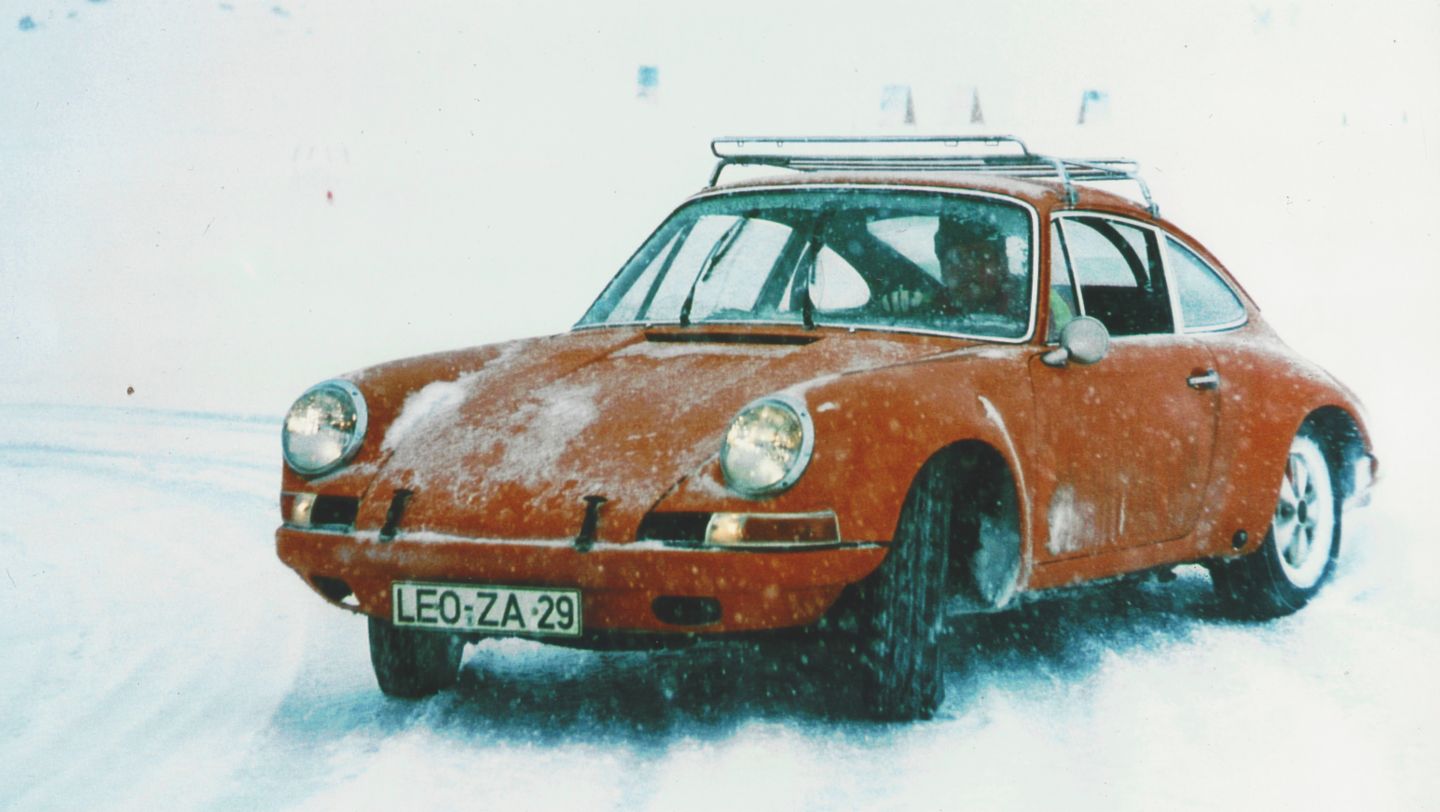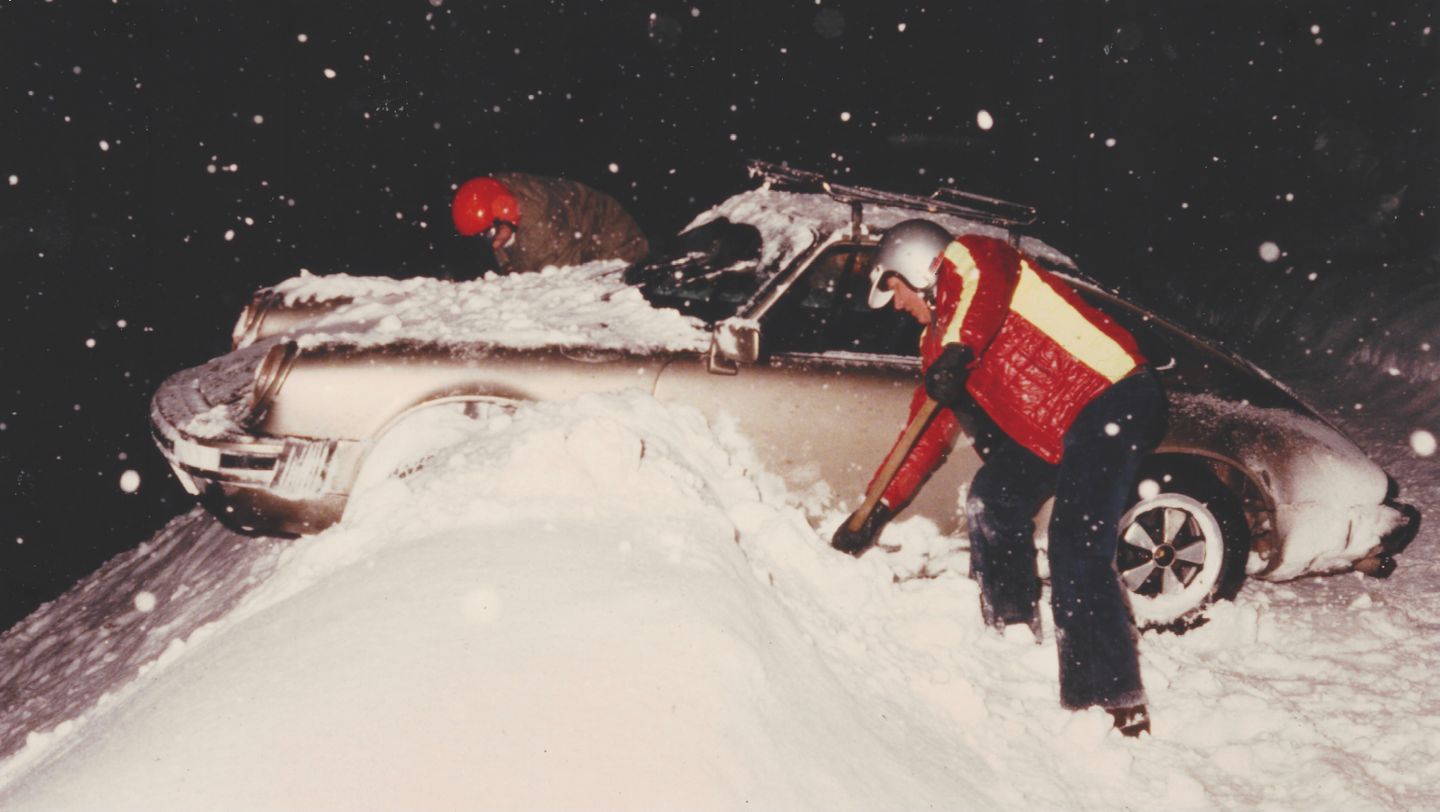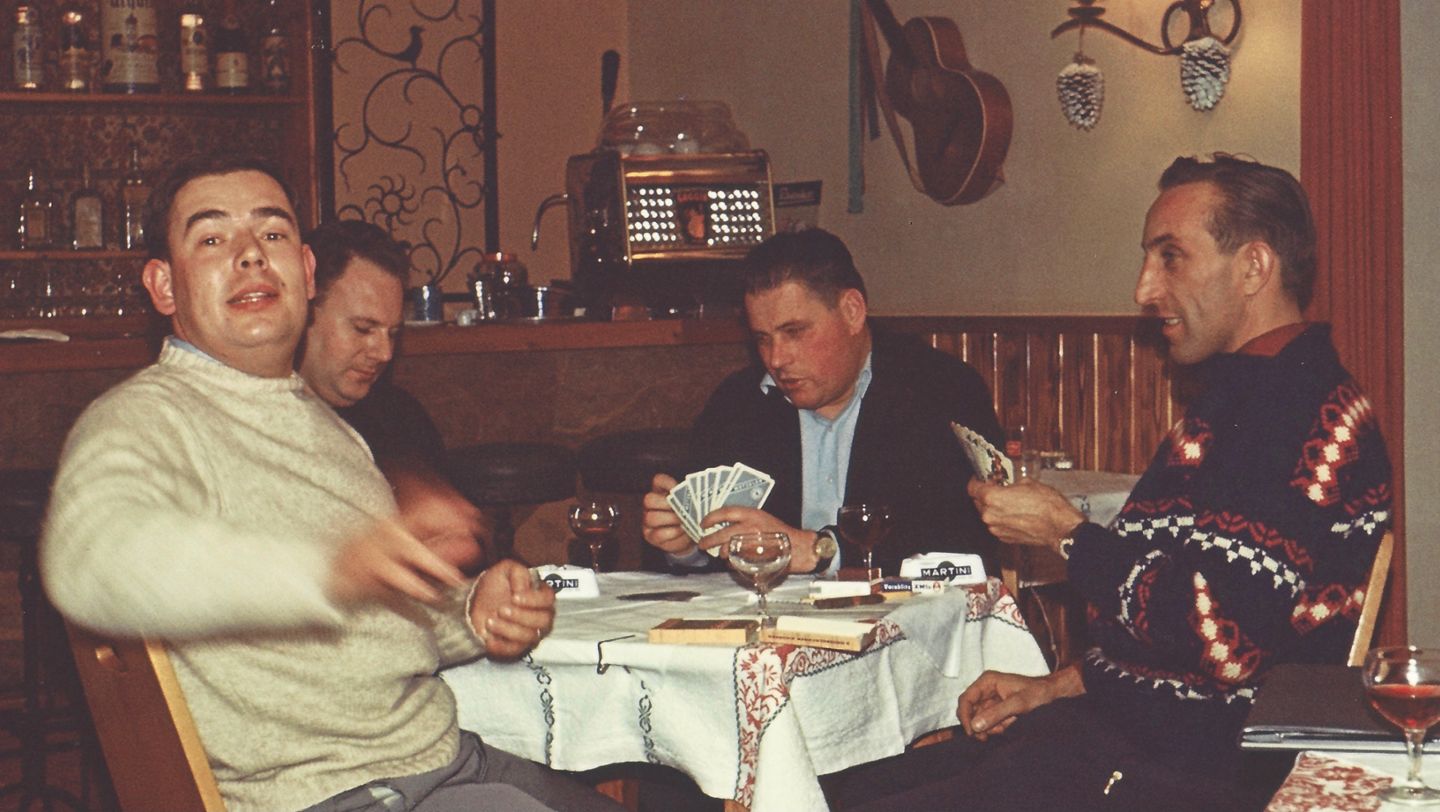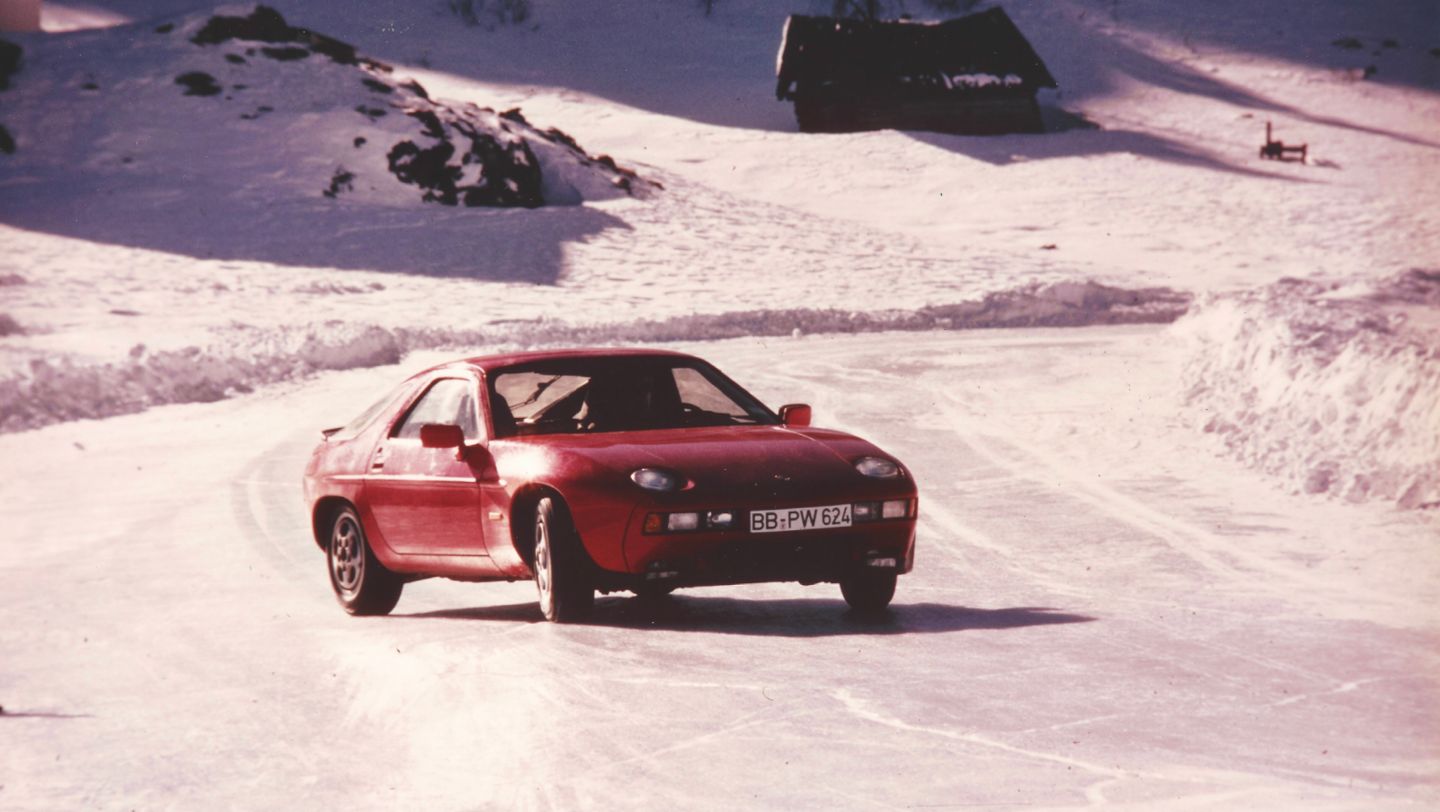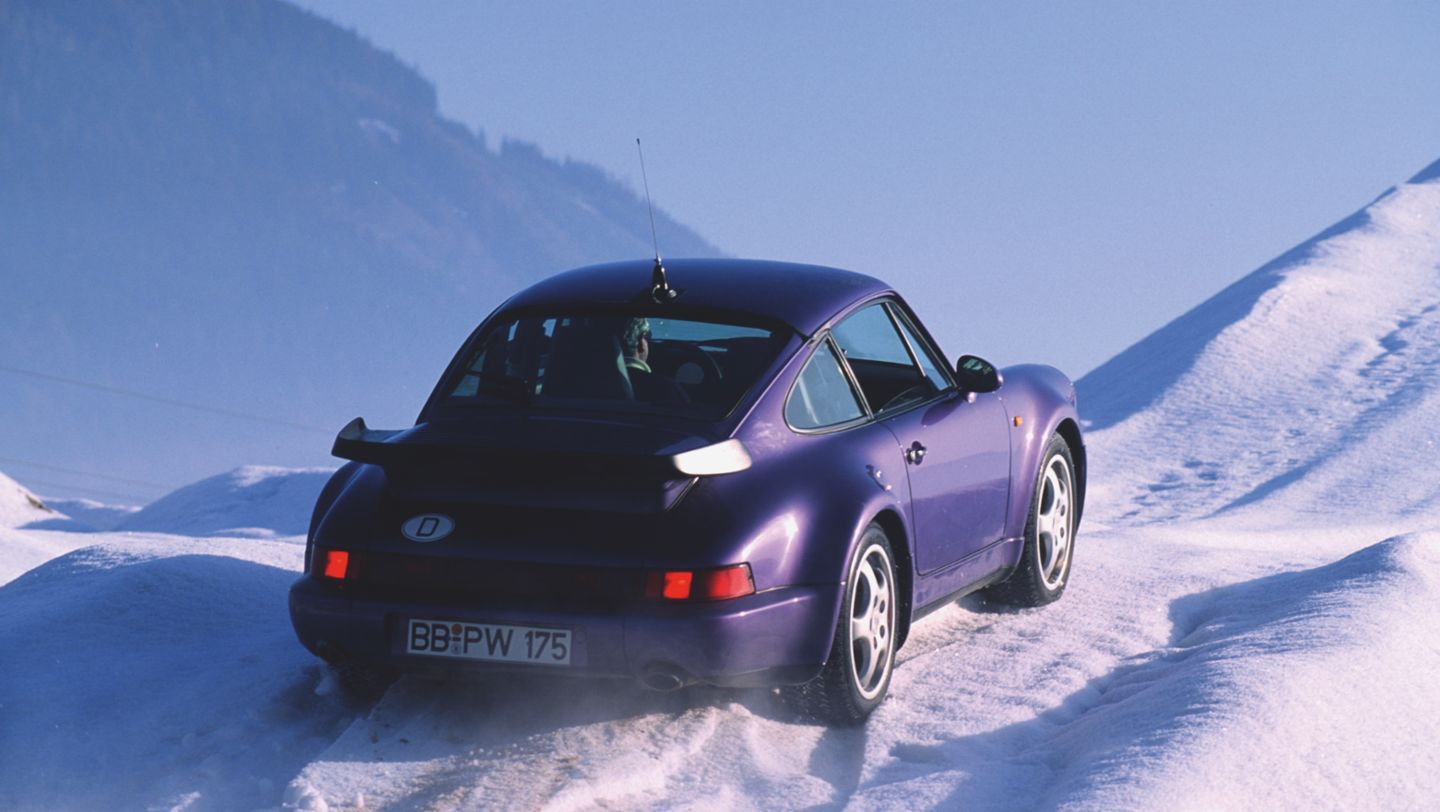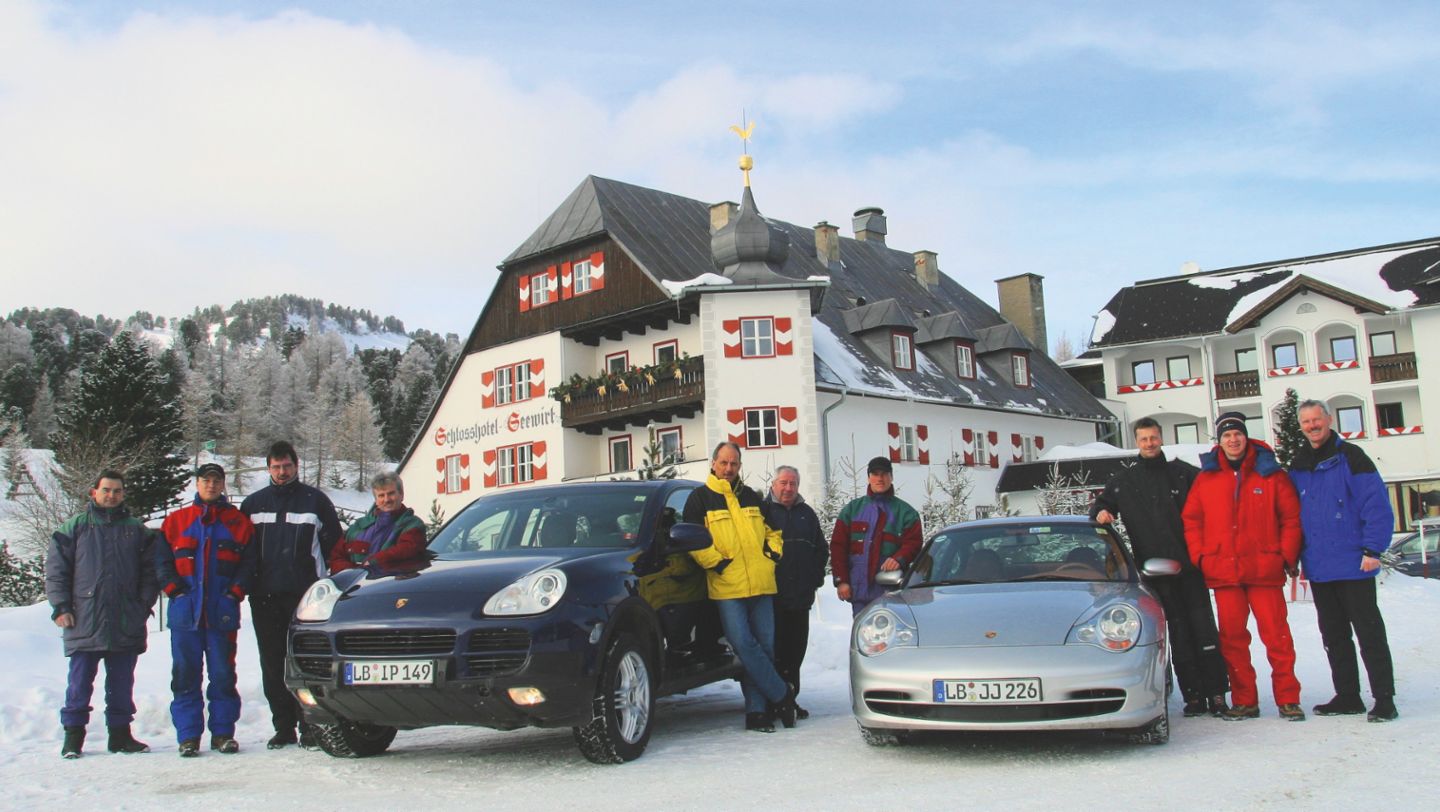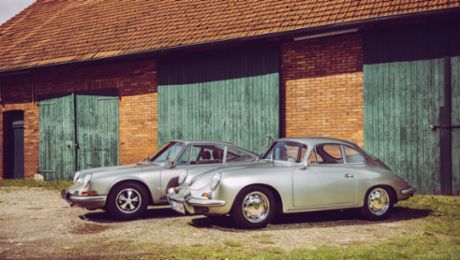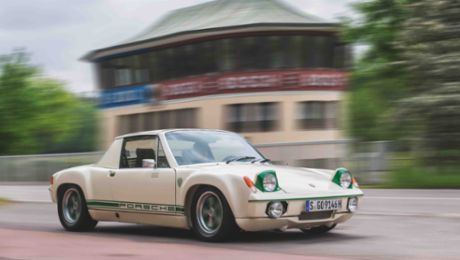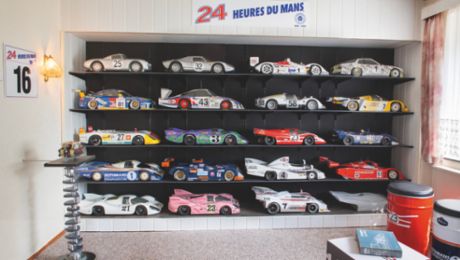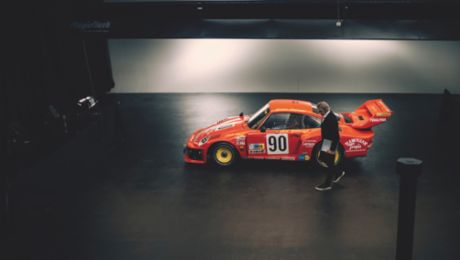The download onto his hard drive is painfully slow, but Dieter Röscheisen, former Porsche test driver, technician and an organisational wizard with decent photography skills, was adamant that it was worth it: a PDF 178 pages long with photos, forewords and informative captions. All compiled by Dieter himself. Many photos are by Wolfgang Schmierer, who was often behind the camera for Porsche. All have a common theme: winter testing at the Turracher Höhe pass in Austria between 1961 and 2001. And they’re all there: Linge, Bott, Köfler, Falk, Hecht, Clausecker, Steckkönig and so many other Porsche greats, but also those who, like benign ghosts – think of Hermann Hesse’s Siddartha – were always present, always important. And, thanks to these images, will never be forgotten.
Turrach: a small town in Austria
In the 1950s, winter sport had not yet gained a foothold here in the Gurktal Alps, even though the landscape is dominated by several 2,000-metre peaks. The mountain pass to Turracher Höhe is infamous for its bends and inclines. Porsche employee Klaus-Peter Köfler knew the region, having been born and raised in Spital. It was he who drew attention to this area, whereupon Ferry Porsche put him in touch with his friend, the Prince. The still-young Porsche company was looking for a region quieter than the Grossglockner in order to test the 356 on winter tyres and snow chains, always looking for the best design in the ever-expanding tyre market. For this very reason, the Prince of Schwarzenberg made his good friend Ferry Porsche an offer to carry out these test drives on his private forest roads, which were closed to public traffic – and all this free of charge. “This is my contribution to road safety,” said the Prince.
Test tyre sets were acquired, the Opel race transporter loaded up, and off they went: Messrs Bott, Falk, Köfler, Benzinger, Kopp and Linge signed out and joined the expedition to Turrach. Also included were two sets of skis. In the first week of January 1961, the crew moved into Hotel Zirbenhof as guests of the Kranzelbinder family. The host owned a snow blower with a 30 PS VW Beetle engine, and used it to create a handling track on Lake Turrach. The RUD snow chain company had also contributed test sets. That’s how they drove off up the roads through the pass, which were practically unmanageable in winter without snow chains. Every year they made the journey, always in the first week of January, and always with a truck full of tyres with the latest profiles and rubber compounds from Continental, Michelin, Bridgestone/Firestone, Dunlop, Pirelli and, later on, Yokohama as well.
When good old friends return home
Turrach soon proved to be a special place, its remoteness creating closer bonds between the team as it developed and matured. In the evenings, they sat together playing cards or talking, often about their private lives, but strict discipline ruled behind the wheel and when working on the cars. Equipped with a stopwatch and clipboard, and later with electronic measuring equipment and computers, they recorded the performances of the latest trial tyres in tenths of a second. Jürgen Pippig summed up the work in a 1985 issue of ‘Christophorus’: “It’s more than just running through a test programme when the Porsche team comes up to the Turrach pass every January – it’s like when good old friends return home.”
Home changed, however. In place of the Zirbenhof, Schlosshotel Seewirt became the team’s new home base. The test team had grown and the Zirbenhof simply didn’t have enough beds to accommodate them. Nor did time otherwise stand still. The road through the pass was paved with asphalt and made safer. As a result, the volume of traffic grew as well. Tourism also discovered the once-sleepy region. Hotels sprang up around Lake Turrach, and the ice-handling tests, normally carried out at night, were disturbing the peace. In 1972, the Porsche team decided to move operations to the more remote Lake Falkert. The team was able to make do and keep pace with the development process.
A virtuoso behind the wheel
The range of models being tested grew. The 356 and the 911 were joined by the 914, the transaxle models and the 959. And it wasn’t just road tyres being tried and tested: rally tyres were also being put through their paces – for events like the Monte Carlo Rally. A guest appearance par excellence for a virtuoso behind the wheel: Walter Röhrl.
The tyre manufacturers took the Porsche tests very seriously, sent representatives, and came home with many insights that were factored into the development process. And after the tests in Turrach, drivers such as Walter Röhrl or Herbert Linge knew what the latest designs could withstand – and what they couldn’t. The tyres and the Porsche models, some now equipped with all-wheel drive, were increasingly proficient on steep gradients – which could reach 32 per cent. The pace of development was really breathtaking. in 1961, cross-ply tyres with the dimensions 5.60 – 15 were being used, and by the turn of the millennium high-tech tyres such as the 265/35 R 18 were approved for speeds of up to 240 km/h – despite featuring a winter label! The programme grew from just a few sets of tyres to as many as 40, all of which had to be put through the full programme. A lot of work that wasn’t always rewarded. The reliability of the snowfall decreased more and more over the years, until planning became practically impossible. With a heavy heart, Porsche decided to leave Carinthia and Styria and move to the far north, to Sweden and Finland. The last winter tests in Turrach were in 2006. But the memories remain.
Info
Text first published in the magazine Porsche Klassik 28.
Author: Thorsten Elbrigmann
Photos: Archive Dieter Röscheisen, Wolfgang Schmierer
Copyright: All images, videos and audio files published in this article are subject to copyright. Reproduction in whole or in part is not permitted without the written consent of Dr. Ing. h.c. F. Porsche AG. Please contact newsroom@porsche.com for further information.
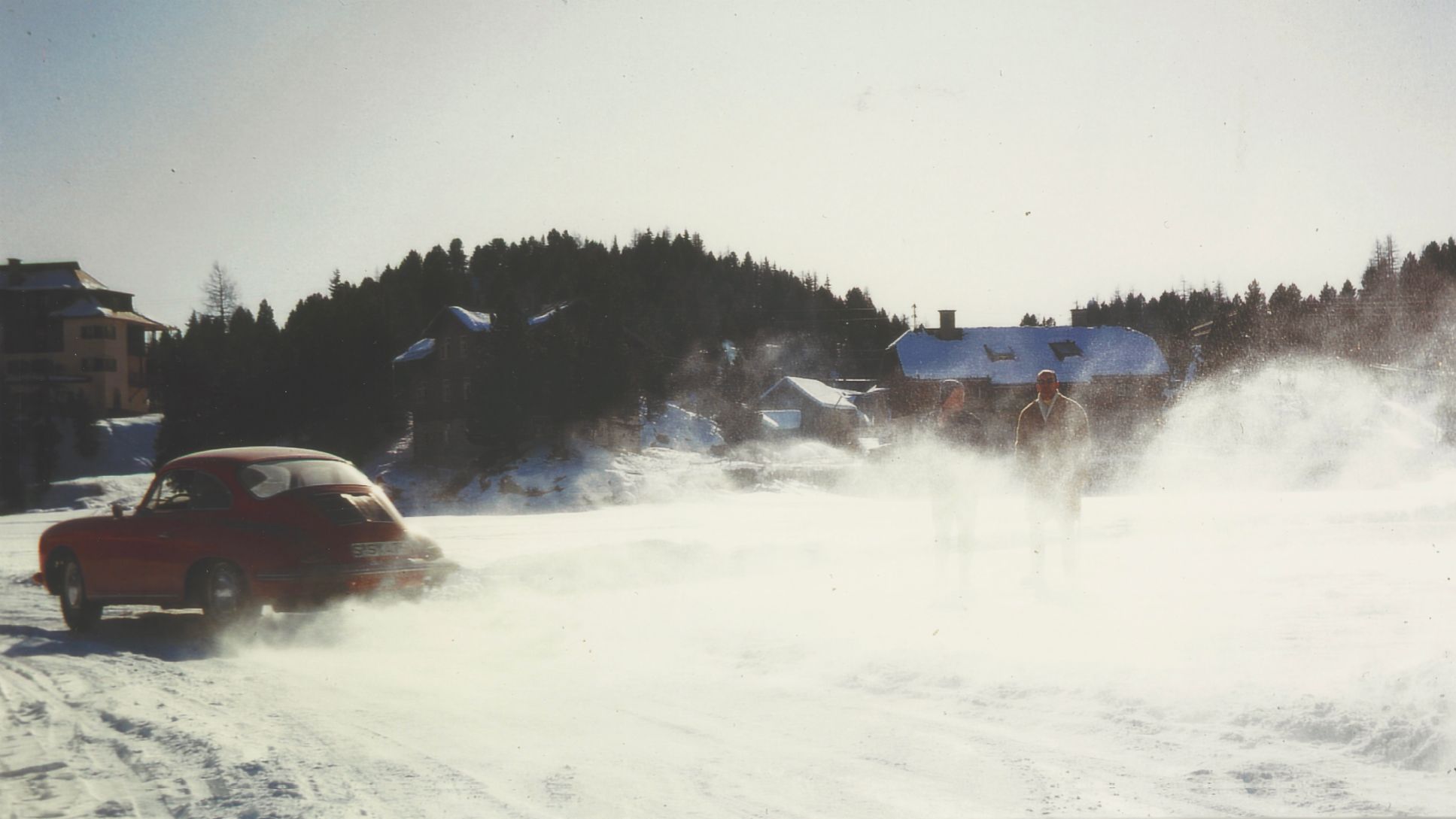

.jpg/jcr:content/01.1961,%20erste%20Wintertests%20auf%20dem%20Turracher%20See%20mit%20Porsche%20356,%20Rupert%20Kranzelbinder%20bei%20der%20Streckenpr%C3%A4parierung_Foto%2017%20%C2%A9Archiv%20Dieter%20R%C3%B6scheisen%20(1).jpg)
.jpg/jcr:content/01.1961,%20erste%20Wintertests%20auf%20dem%20Turracher%20See%20mit%20Porsche%20356,%20v._Foto%207%20%C2%A9Archiv%20Dieter%20R%C3%B6scheisen%20(1).jpeg)
